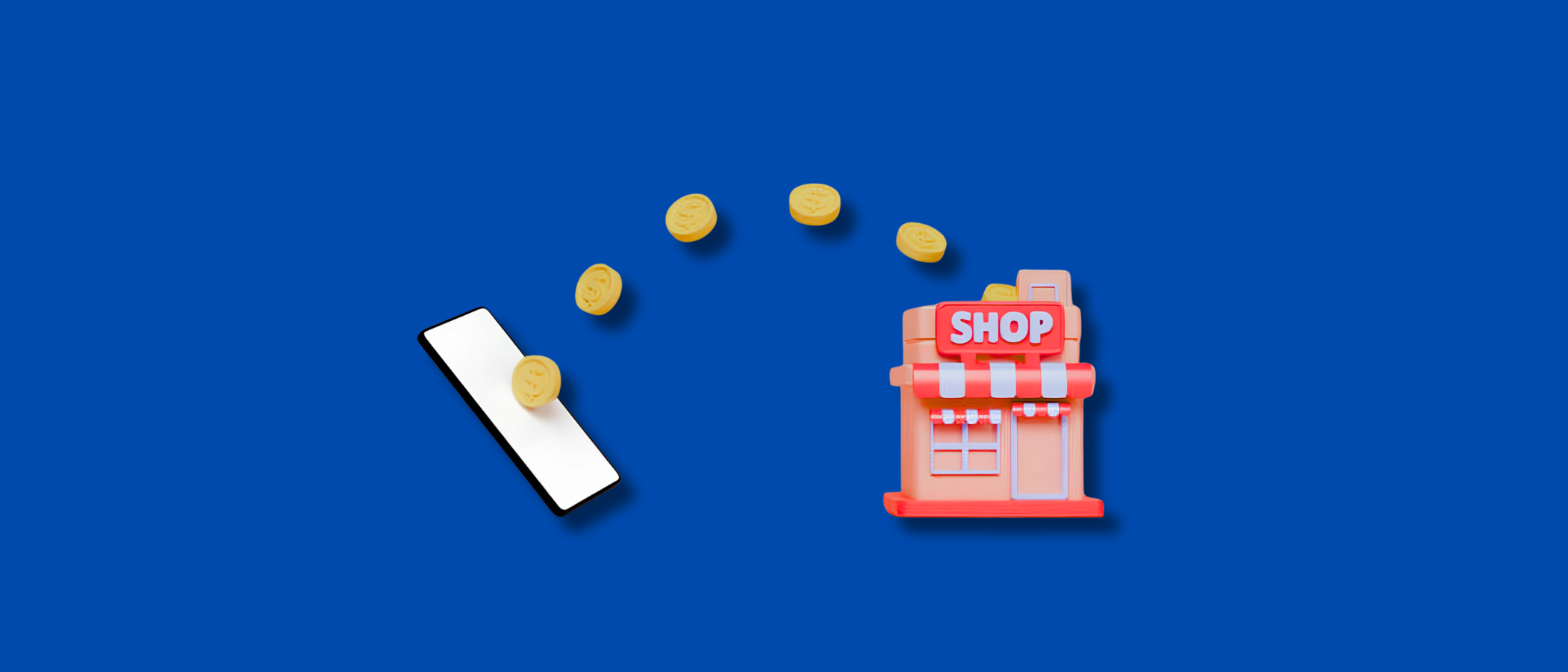To be on top of trends in the year 2025, one must know what has changed and what is revolutionizing the concepts of application design, development, and application usage.
Let me guide you through the trends.
In today’s world, where technology is highly dynamic, trends in mobile application development are not only technological changes but also changes in user experience, ergonomics, productivity, and some innovations.
Here’s an overview of the basic mobile app development trends 2025 that you should stick to:
The Huge Boom in 5G Connectivity
Allow me to walk you through the massive trend in 5G connectivity.

With this rollout coming, we will be able to create more interactive, real-time applications, high-quality streaming services, and a better range of connectivity with less latency
5G will work its magic as there will be faster downloads, lower latency, and better connection for mobile applications.
Voice Search and Voice Activated Applications
Voice-based systems are quite popular, with the likes of Siri and Alexa making their way into many households.
The trend toward voice search as well as voice triggers within mobile applications will be additive to mobile app design trends in 2025.

This technology will be employed in things like e-commerce applications and smart home applications to promote easy interaction among users.
Applications of Artificial Intelligence
In this context, it is expected that in 2025 Mobile Applications will again be the medium through which Artificial Intelligence will provide Customized Experiences, Automation, and Smart Decision Making among other features.
These are some possible AI applications.
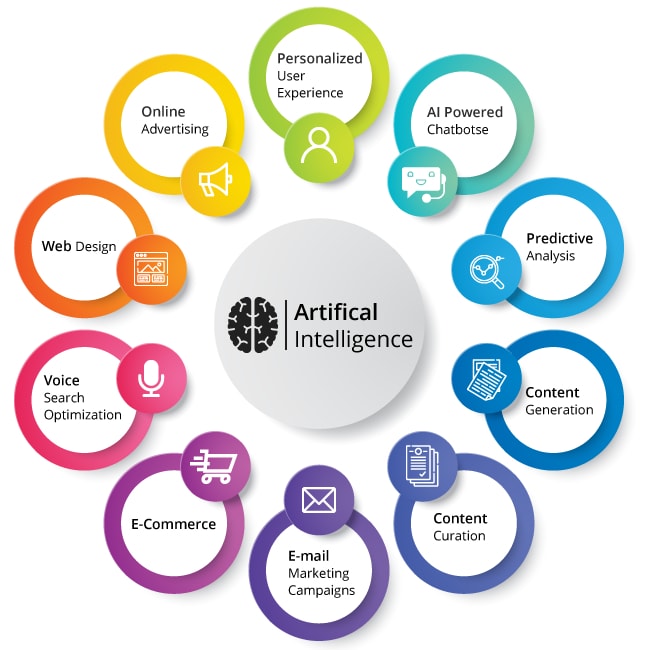
Some of the emerging mobile app development trends 2025 entail the incorporation of AI in smartphones and software devices by use of smart bots, predictive texting and picture identification, and highly customized recommendation systems which will improve app participation.
Augmented Reality (AR) and Virtual Reality (VR) Reinvented:
Augmented Reality and Virtual Reality technologies can enhance service delivery to your clients and create more room for the potential expansion of the organization.
A man can be seen wearing a Virtual Reality (VR) headset quite clearly in connection with a large screen projection displaying a virtual car design.
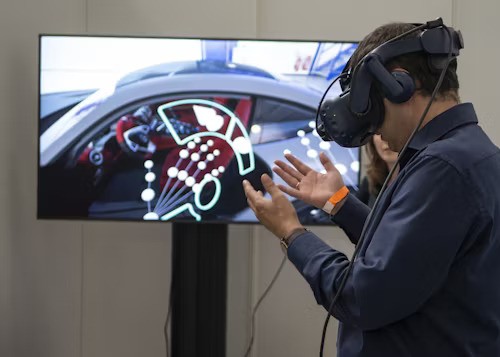
The shift to industrial transformation does begin with AR and VR of course. From Retail to healthcare, the industries are set to be more mainstream in 2025.
Mobile app Trends 2025 will be utilizing AR/VR to make the users experience some virtual try-ons, tutorials, and navigation in 3D.
Apps associated with e-commerce as well as education are set to trend in the next few years.
Wearable Technology Integration
The process of incorporating wearable technology, as well as improving your customer experience analytics to the current moment.
I believe, there is a lot of scope in wearables for the conduct of operations and for the growth of businesses that we could explore.
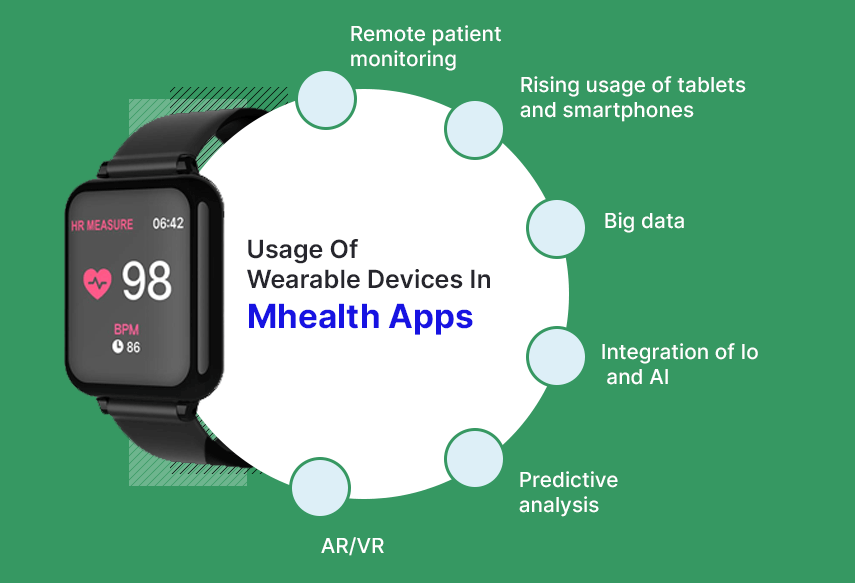
While examining this image, one can see six core elements, which are the main growth and wearable tech health applications in mHealth.
It is projected that 2025 will be the year when the incorporation of mobile applications into smart bands, smartwatches, and fitness devices takes center stage.
Health monitoring, messaging, and even thermal and electric control of one’s household living space are kinds of auxiliary features that enable interaction with wearable devices and will be incorporated in the best mobile app development trends 2025.
Mobile business and Wallets
Mobile commerce and digital wallets, showing you the way around transaction lubrication and customer comfort improvement.
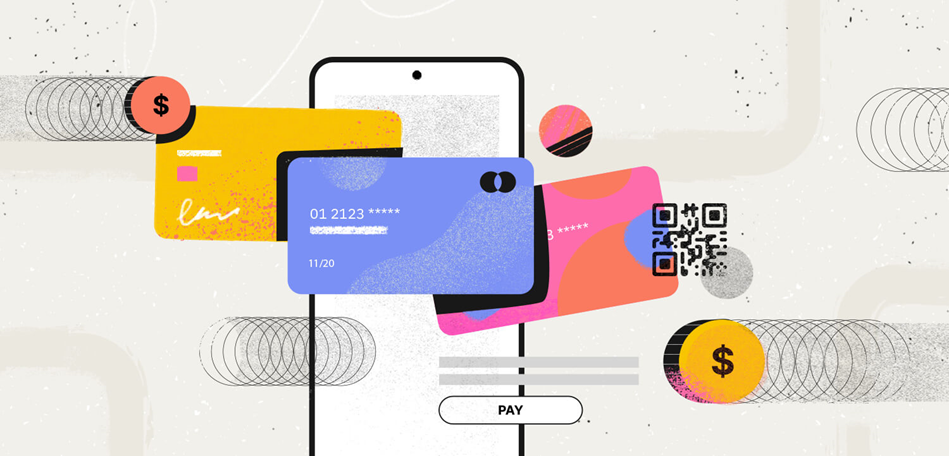
Let me discuss how the solution of any payment using a mobile phone can lead to increased efficiency in business and customer satisfaction.
- Maturity-Boosting Steps: Online shopping is becoming more and more popular. It is predicted that m-commerce apps will gain more popularity in the years to come.
- The order of shopping in the future will be all about mobile wallets.
- Integration of digital payment.
- Seamless filling of checkout.
In 2025, look for apps that offer safety, ease of use, and a customized approach to shopping.
Biometric Authentication Expansion
Step into a world where your mobile apps know you on sight—no passwords, no pins, just you.This form of biometric authentication is set to redefine application security as an industry by 2025 when usage shifts to entail varieties like voice patterns, iris scans, and unique gestures rather than just fingerprints and facial recognition.
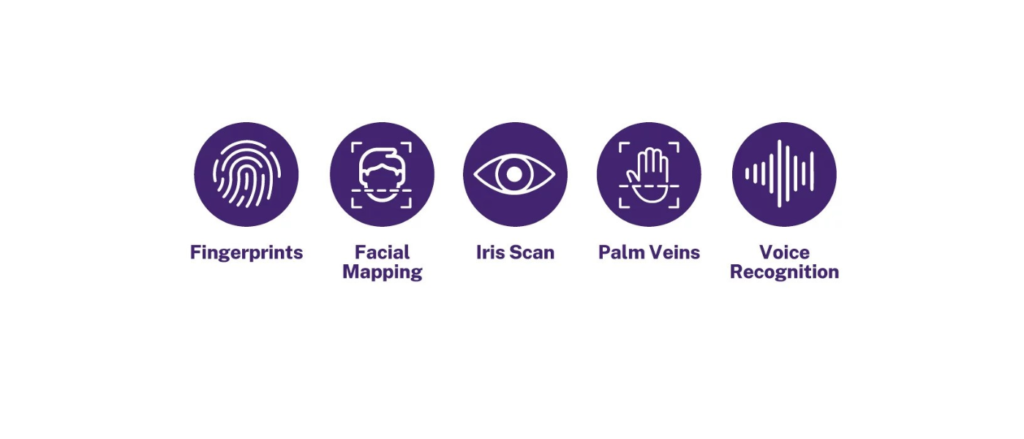
This is a matter of safety- a move to a safer, more intelligent, and more intuitive app experience that is personalized for you. Then, let’s examine how our changes come in the future of mobile security.
Benefits of Biometric Authentication:
- Enhanced Security: Biometrics are tougher to spoof or hack than credential safeguards such as penetrate and pin. Therefore, much more secure.
- Seamless User Experience: The use of applications requires no friction because single-touch or facial recognition logins help accelerate the user into an application.
- Personalization: Tailoring user experience with biometric data benefits applications in that it can be tailored to the individual’s environment, tastes, and habits.
- Multi-layered: Apps will be secured further by combining biometrics with other channels for authentication, like asking to identify the device used and behavioral intelligence.
- Regulatory Compliance: As data protection laws tighten across the globe, biometric identification would lessen the number of compliance challenges that applications face regarding privacy and security measures.
In the future, such a trend is sure to change forever how you interact with apps like banking, healthcare, e-commerce, and more, and secure your personal data and digital experiences.
Cloud-Based Mobile Apps
There’s a lot of noise and competition in today’s cloud mobile app development field.
Allow me to go through the trend of cloud-based mobile apps, and let the solution be scalable in a manner that enhances performance, accessibility, and user experience.
Some of the benefits of cloud computing are shown in this picture:
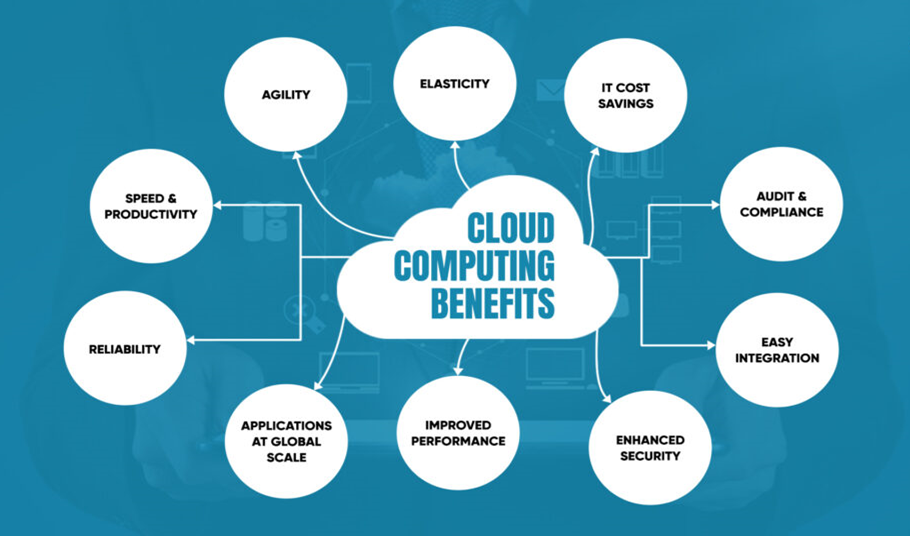
Cloud computing is another crucial function that would enhance the performance of mobile applications in 2025.
Cloud enables appreciable app development, cloud computing encourages a maximum limit on resources and remote storage.
Assuming the mobile app development trends 2025 for businesses, controlling costs and improving efficiency will reduce the need for many physical server installations.
Mobile App Security
Are you ensuring your mobile app is secure?
Let’s explore key strategies and technologies to protect your data, prevent breaches, and safeguard your app’s reputation.
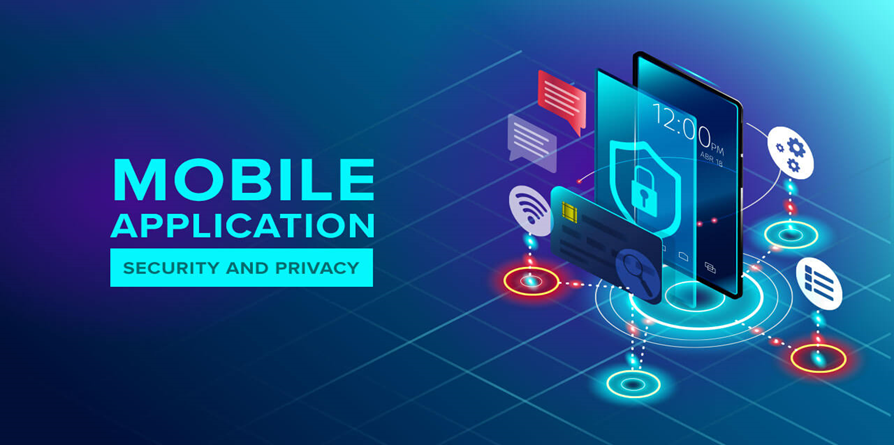
Particularly considering the increase in the amount of data collected as well as rising in data breaches and cyber threats, the development of mobile applications in 2025 will place greater emphasis on security issues. This overreliance on improvements such as two-factor authentication and biometric recognition will take center stage.
However, due to the rise of privacy policies, we have no choice but to design highly secure applications to win the confidence of the end users.
Super Apps
The term super apps refers to mobile applications that integrate various services into a single application, gaining traction mostly in the Asian continent. For example, one might indicate an application where users can send messages, make payments, do online shopping, or even book travel.
A single application that offers us a variety of services for commercial and personal use.

In 2025, therefore, another new craze of mobile app trends 2025 will come concerning large-scale applications in which need services can be accessed from different ones at the same place.
Blockchain Technology
Application development is undergoing a revolution in security and information control. These developments introduce decentralized, open, and resistant applications.
So, how does this technology in 2025 enhance trust and security in applications?

Moving beyond applications related only to cryptocurrency, blockchain technology is also venturing into the mobile app world. As predicted, by the year 2025, trends in mobile app development will also include Blockchain capable of ensuring safe transactions between users, secure data storage, and waterproofing user identity.
There are already predictions on Blockchain-based Mobile applications by 2025 that will favor the finance, healthcare, and logistics industries.
IoT Integration
With the help of the Internet of Things, this cloud solution allows your application to connect and control smart devices live, therefore, creating a convenient solution to everyday life for users.
The image speaks for itself with a well-organized and informative design in assisting the communication of its content.
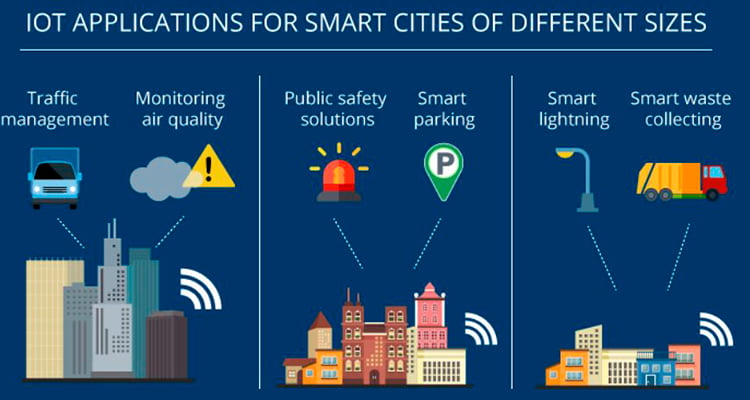
One of the reasons is the capacity of these devices and the numbers that are expected to be billions by 2025 IOT integration will be very important in most mobile apps. The norm is that mobile applications will come with such capabilities and will allow users to control and converse with intelligent devices.
This applies to both health monitoring systems and smart home applications where mobile app design trends 2025 will be more concentrated on the development of applications that can connect and interact with all devices without interruptions.
Gesture-Based Navigation
Devices allow for increasingly natural and effortless engagement, which is a quality actively sought by users. Aiming at developing thumb-friendly mobile applications, we will expect more swipes, pinches, or taps in 2025.
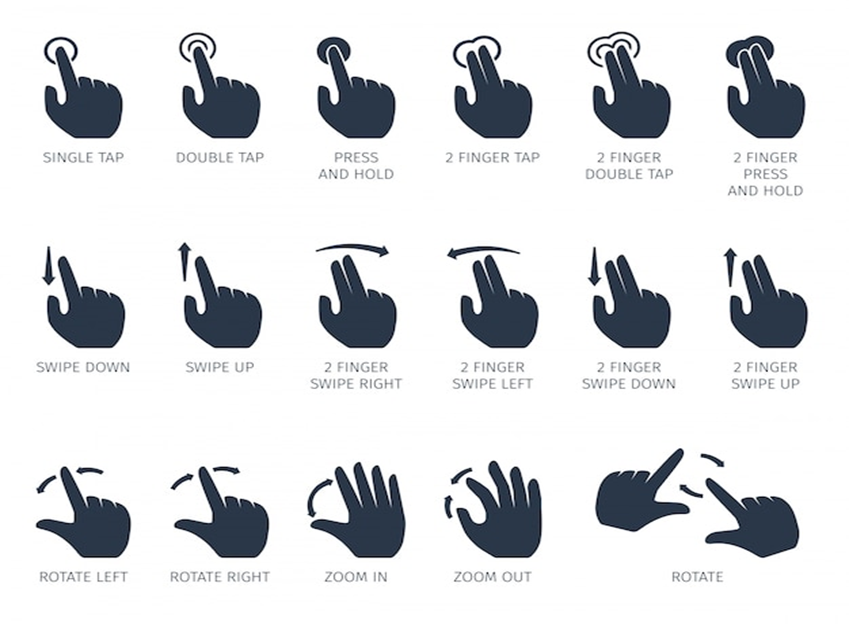
This is the way that the interface is disposed to the user hence making it very interactive and fluid with the user especially where there is the use of video, games, or even augmented reality.
Personalized Experience of the User
Personalized user experiences (UX) are quickly becoming a keystone of successful mobile app development. This means configuring people by creating specific methods of accessing their needs, preferences, and behaviors in the interacting digital world.
For example, businesses can create highly personalized experiences; to encourage better customer engagement and satisfaction, those can include customer history, location, or other preference data.
The diagram illustrates the main aspects of UX design.
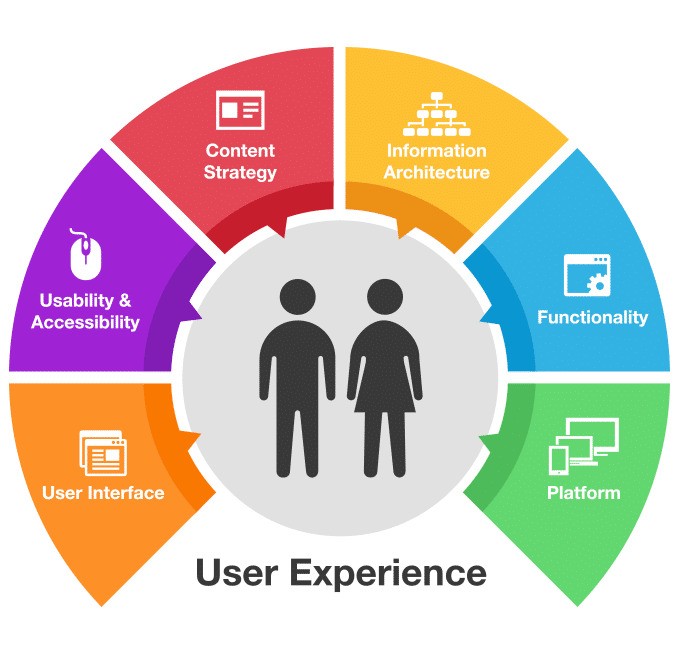
Step by step, here’s what each of them represents:
- User Experience Center: The ultimate goal of any design is to create a positive and constructive feeling in the user. Both symbols depict users themselves – all design elements revolve around them.
- User Interface: Refers to the graphic aspect of the layout, design, and operations within the product. This talks about the visuographic engagement of the user and the system.
- Usability & Accessibility: Here, it concerns the level of use of the design by the users and most importantly, if the design is aimed at every user and if they can effectively use it to perform tasks.
- Content Strategy: It involves the process of creating and optimizing useful, relevant, and inspiring content in line with the targets and interests of the audience.
- Information Architecture: This is the way a product or a website is structured and how information is organized. Thus, this determines how easily or difficult the users will be able to find what they want.
- Functionality: Refers to how much a product or a website can do what it’s meant to do for the user and how “satisfied” the user is with its performance. In this case, the effectiveness in usability comes into play.
- The platform: The devices and systems -through which the experience will run, like the Web, mobile, and desktop. It all gets to putting up everything for proper working over the different platforms.
View of the above-described diagram seeks to explain that UX is interrelated to all those elements whose combination offers a meaningful and pleasant experience to the end user.
Along with the mobile usage of applications, there is a massive amount of data that users continuously produce. It has taken the best trend for users’ engagement and retention as well as creating more interesting experiences.
Instant App Experience
An instant app experience refers to the creation of an app that can be used without necessarily being installed on a mobile device.
- No installation
- No storage
- Use and forget
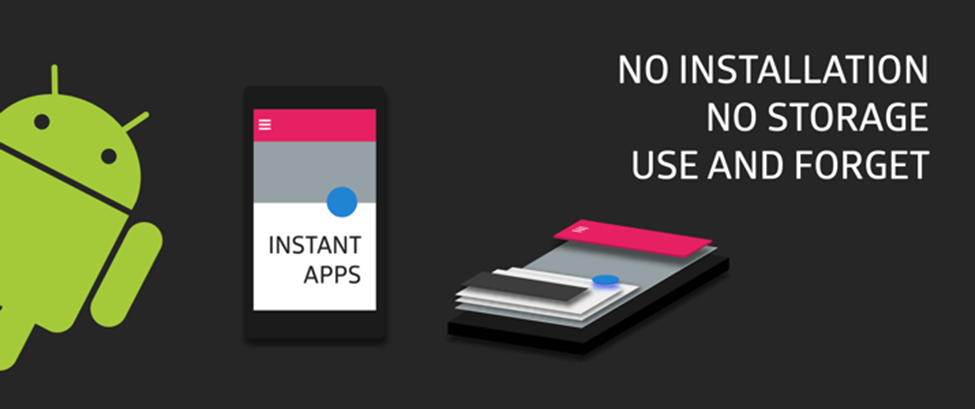
In the year 2025, it is anticipated that there will be a wider appeal for users who love short interactions without the need for long and tedious installations.
Instant apps are going to revolutionize the way users engage and experience mobile applications.
Cross-Platform Development
It’s impossible for the trends in mobile application development of 2019 not to be shaped by the onset and gradual uptake across the board of cross-platform enabling technologies such as Flutter and React Native.
The following picture provides information on some of the most common frameworks used for creating cross-platform applications that are compatible with both iOS and Android operating systems. This allows us to save on time and costs as opposed to customizing an application for its native audience.
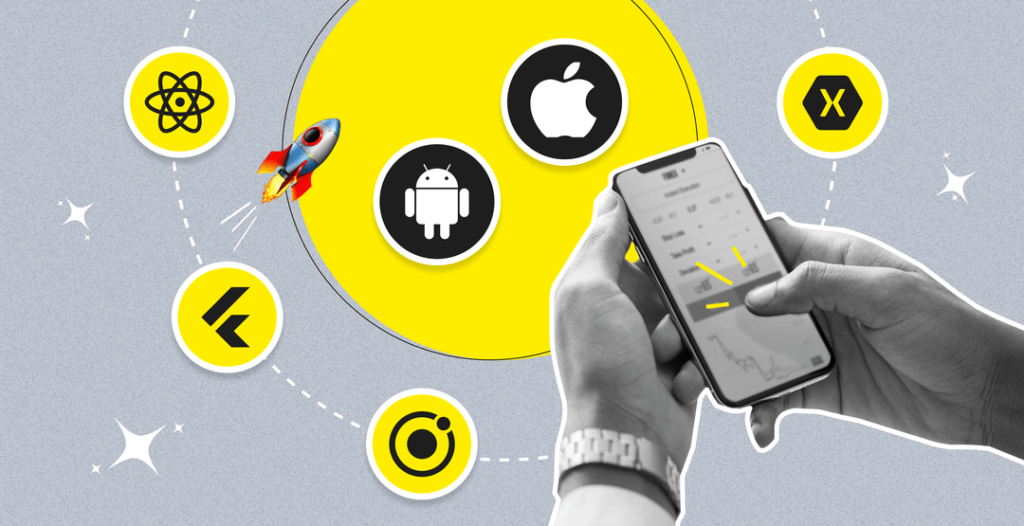
Mobile application usage trends in 2025 however will welcome even more cross-platform frameworks in consideration, to create top-notch applications that can be deployed on iOS, Android, and the web, from a single code sash.
Mobile-First Approach
With more usage on mobile than on desktop machines, the year 2025 will see mobile-first development become the default strategy.
3 major benefits of the mobile-first design approach:
- Focused
- Share wildly
- Faster and cheaper
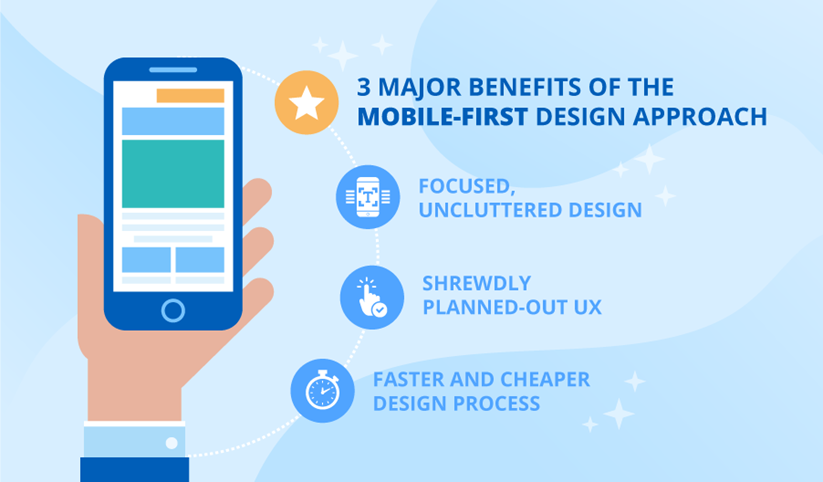
This is because there has been an increase in the number of people who use mobile devices, thus, optimizing websites for it and or developing mobile-centered applications. We will need to prioritize mobile-first strategies and only then scale to other platforms.
Predictive Analytics
Predictive analytics shall be an important feature for most apps by 2025.
It works with past analytics and builds a profile of a user predicting their possible actions and making some recommendations for products they may like.
The image shows how these components work together to create accurate and useful predictive models for decision-making.
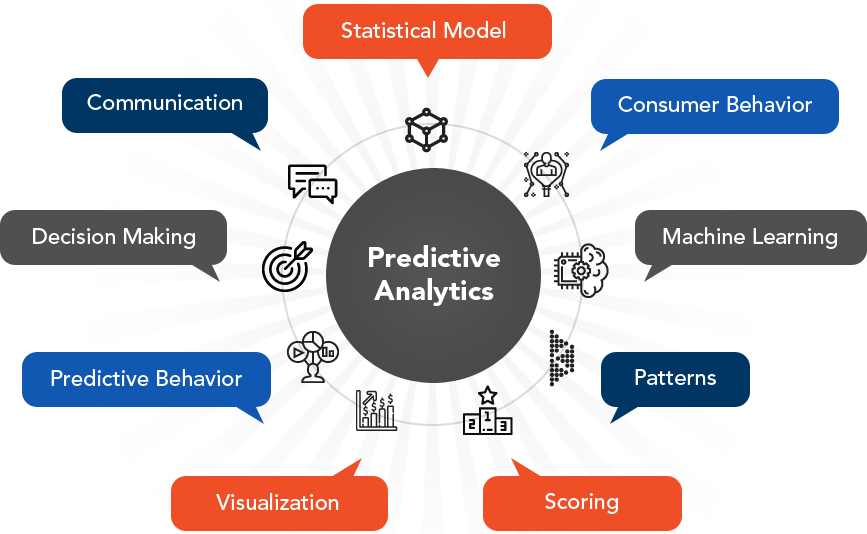
The key concept is based on Predictive Analytics and its numerous components, which are necessary for its success. These components can be classified as follows:
Data & Methodology:
- Statistical Model: This is the heart of predictive analytics i.e. a model is created employing certain statistical techniques.
- Machine Learning: Algorithms that enable the model to learn from the data and make better, accurate predictions with time.
- Patterns: Past data from which a prediction is made that covers the existing trends and relationships in the data.
Input & Context:
- Customer Dynamics: Such estimates are only as good as the understanding of customer behavior and engagement.
- Prognosis of actions: Demonstrated actions are the basis upon which projected actions rest.
Output & Application:
- Decision Making: The final objective. Helping them to figure out what business decisions should be taken.
- Communication: Delivering the results of the conducted analysis to the relevant management.
- Visualization: Presenting the achieved results in the form of figures and drawings.
- Scoring: Assigning numbers to estimate the likelihood of a certain occurrence.
Predictions and suggestions are always welcomed in any application a user interacts with. Even if it’s a shopping app a media app or a fitness one, the use of predictive analytics will surely boost user experience and satisfaction.
Concluding Remarks
As seen, the need for mobile app development in 2025 concentrates on enhancing the already achieved level of intuitiveness, security, and interactivity in user experience.
By adopting new technologies in the 5G, AI, AR/VR, and blockchain spaces, embedders of applications will be on thumbs up and will forget to keep updating applications since they will develop apps that keep up with the changes of the consumers.
FAQs
What is the latest technology in mobile application development?
With the Rise of 5G Technology, users can anticipate more responsive and fast apps, opening doors for augmented and virtual reality, IoT, artificial intelligence, and machine learning to thrive.
What is the most important trend for mobile application development?
The low-code/no-code movement is one of the most important software development trends happening right now.
What impact does artificial intelligence have on mobile applications?
Intelligent decision-making will be added to applications, therefore, predictive texting, personalized recommendations, and image recognition will come in handy.
How personalized user experiences will affect mobile applications?
Personalization will allow apps to customize content, recommendations, and interfaces based on their unique user’s preferences and behaviors.
What is the difference between native and hybrid apps?
In a native app, your developers have to rewrite and redesign all the app functionality in the native development language. A hybrid app lets you write the app functionality in a single codebase.



